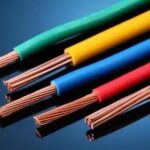The 15 most common problems of cable materials!
The power cable industry is a large pillar industry in China. The production process needs high production standards, and maintains the safe operation of the whole industrial system. Therefore, the majority of power cable manufacturers need to conduct a very strict audit and purchase of cable production materials. The following will introduce the problems of … Read more

